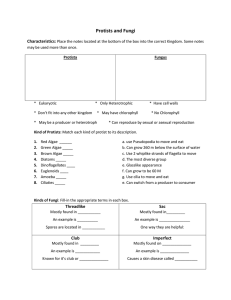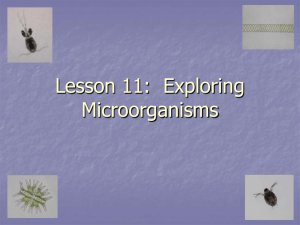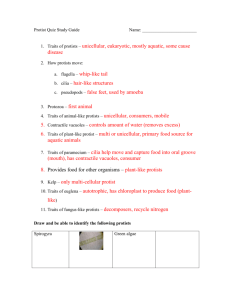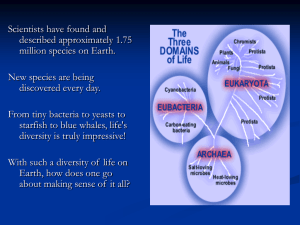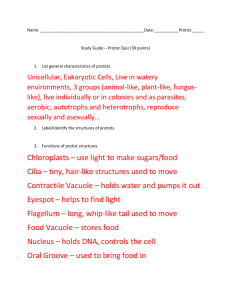Fungus-like Protist - KIngdomProtistaLesson
advertisement
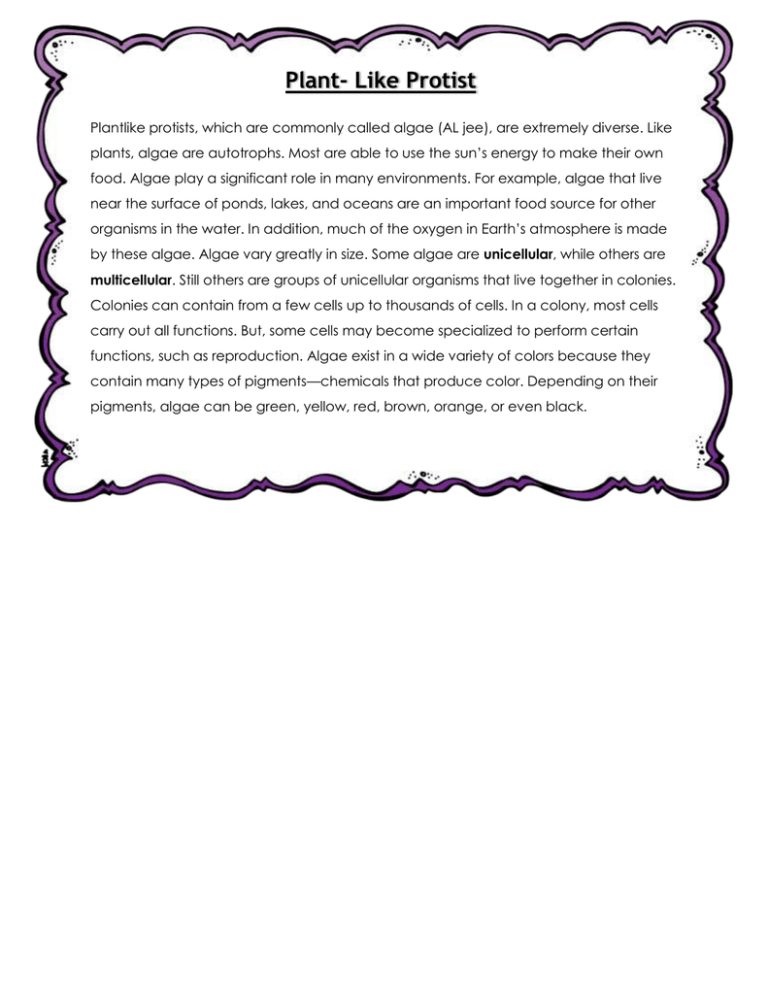
Plant- Like Protist Plantlike protists, which are commonly called algae (AL jee), are extremely diverse. Like plants, algae are autotrophs. Most are able to use the sun’s energy to make their own food. Algae play a significant role in many environments. For example, algae that live near the surface of ponds, lakes, and oceans are an important food source for other organisms in the water. In addition, much of the oxygen in Earth’s atmosphere is made by these algae. Algae vary greatly in size. Some algae are unicellular, while others are multicellular. Still others are groups of unicellular organisms that live together in colonies. Colonies can contain from a few cells up to thousands of cells. In a colony, most cells carry out all functions. But, some cells may become specialized to perform certain functions, such as reproduction. Algae exist in a wide variety of colors because they contain many types of pigments—chemicals that produce color. Depending on their pigments, algae can be green, yellow, red, brown, orange, or even black. Animal-Like Protists Most people immediately associate animals with movement. In fact, movement is often involved with an important characteristic of animals— obtaining food. All animals are heterotrophs that must obtain food by eating other organisms. Like animals, animal-like protists are heterotrophs, and most are able to move from place to place to obtain food. But unlike animals, animal-like protists, or protozoans (proh tuh ZOH unz), are unicellular. Protozoans can be classified into four groups, based on the way they move and live. Fungus-like Protist Fungus-like protists are like Animal-like protists, due to the fact that they both are heterotrophic. Fungi like protist obtain their energy by decomposing and breaking down organic matter. In addition, most fungi use spores to reproduce. A spore is a tiny cell that is able to grow into a new organism. Like fungi, fungus-like protists are heterotrophs, have cell walls, and use spores to reproduce. All fungus-like protists are able to move at some point in their lives. Example Organisms Animal Like Protist Plant like Protist Fungus like protist The amoeba is considered an animal-like protist because it moves and consumes its food. Protists are classified by how they move, some have cilia or flagella, but the amoeba has an unusual way of creeping along by stretching its cytoplasm into fingerlike extensions called pseudopodia. The word "pseudopodia" means "false Euglena are unicellular organisms classified into the Kingdom Protista, and the Phylum Euglenophyta. All euglena have chloroplasts and can make their own food by photosynthesis. They are not completely autotrophic though, euglena can also absorb food from their environment. Euglena usually live in quiet ponds or puddles. Euglena move by a flagellum (plural ‚ flagella), which is a long whip-like structure that acts like a little motor. Most fungus like protist live in water or moist places. Water molds and downy mildews attack many food crops, such as potatoes, corn, and grapes. Slime molds are often brilliantly colored. They live on forest floors and other moist, shady places. They ooze along the surfaces of decaying materials, feeding on bacteria and other microorganisms. Some slime molds are so small that you need a microscope to see them. Others may cover an area of several meters! foot". The second group of animallike protists are the ciliates. Ciliates have structures called cilia (SIL ee uh), which are hairlike projections from cells that move with a wavelike motion. Ciliates use their cilia to move and obtain food. Cilia act something like tiny oars to move a ciliate. Their movement sweeps food into the organism. Paramecia usually reproduce asexually by binary fission.


